Get PeakVisor App
Sign In
Search by GPS coordinates
- Latitude
- ° ' ''
- Longitude
- ° ' ''
- Units of Length

Yes
Cancel
Share ×

Scan the QR code and open PeakVisor on your phone
❤ Wishlist ×
Choose
Delete
In the southwestern zone of Yangmingshan National Park (陽明山國家公園) of northern Taiwan is the vibrant and accessible region of Yangmingshan Natural and Cultural Special Landscape Area (陽明山自然文化景觀核心特別景觀區). Out of the region’s 9 named mountains, Shamao Shan (纱帽山) is the region's tallest and most prominent peak at 644 meters (2,113 ft).
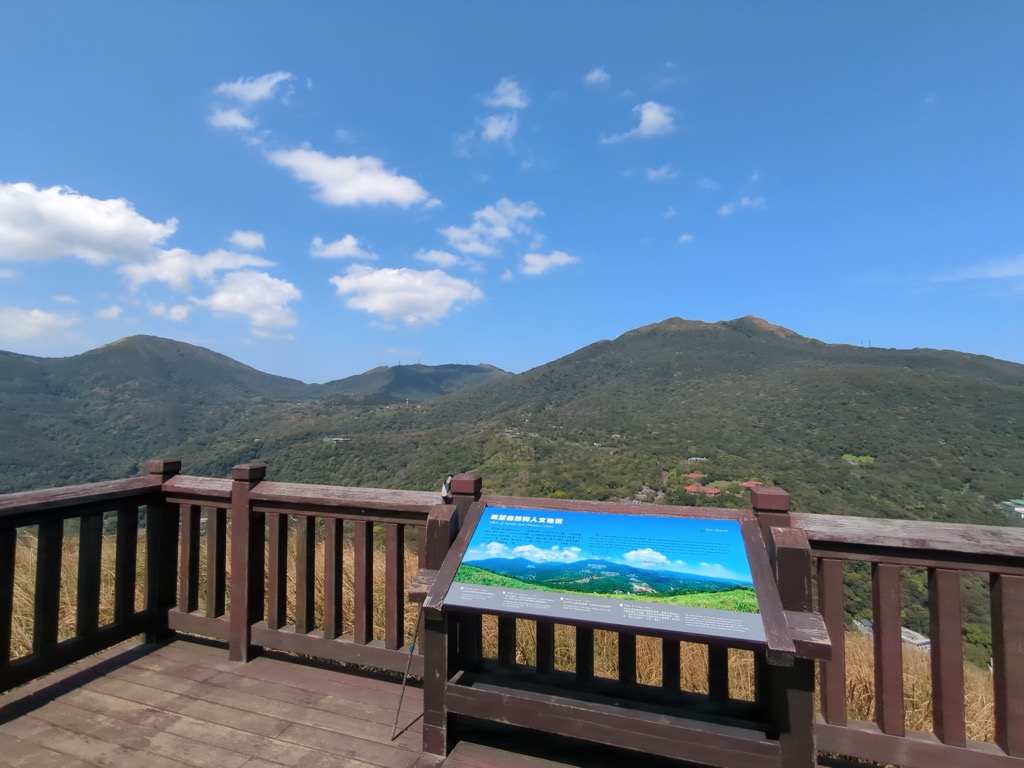
Known as Taipei’s (臺北市) flourishing back garden, Yangmingshan National Park is an 11,338 ha (28,000 ac) hilly grassland. Due to its vast size, smaller zones are grouped according to specific geological, geographical, and cultural areas. For example, Qixingshan Special Scenic Area (七星山自然文化景觀核心特別景觀區) circulates around Xiaoyoukeng’s fumaroles and the Datun Lianfeng Special Scenic Area (大屯連峰自然文化景觀核心特別景觀區) centers around Datunshan’s (大屯山) hilly network. Thus, Yangmingshan Natural and Cultural Special Landscape Area promotes the historical relics of the area.
Yangmingshan Natural and Cultural Special Landscape Area lies in the Beitou District (北投區) of Taipei City. Some noteworthy features of this zone are the historical Beitou Hot Springs (北投温泉), Prince Pavilion, and Qing Dynasty tombs. There are also numerous natural attractions, from waterfalls, springs, hills, and valleys.
Some other hills in the landscape area are Hu Shan (湖山), Jian Shan (尖山), and Xinbeitou Shan (新北投山). Yangmingshan Natural and Cultural Special Landscape Area’s peaks belong to the volcanic belt running through northern Taipei’s highlands. Thus, the region features post-volcanic activity in the form of hot springs, where visitors can stop and relax for a steaming soak.
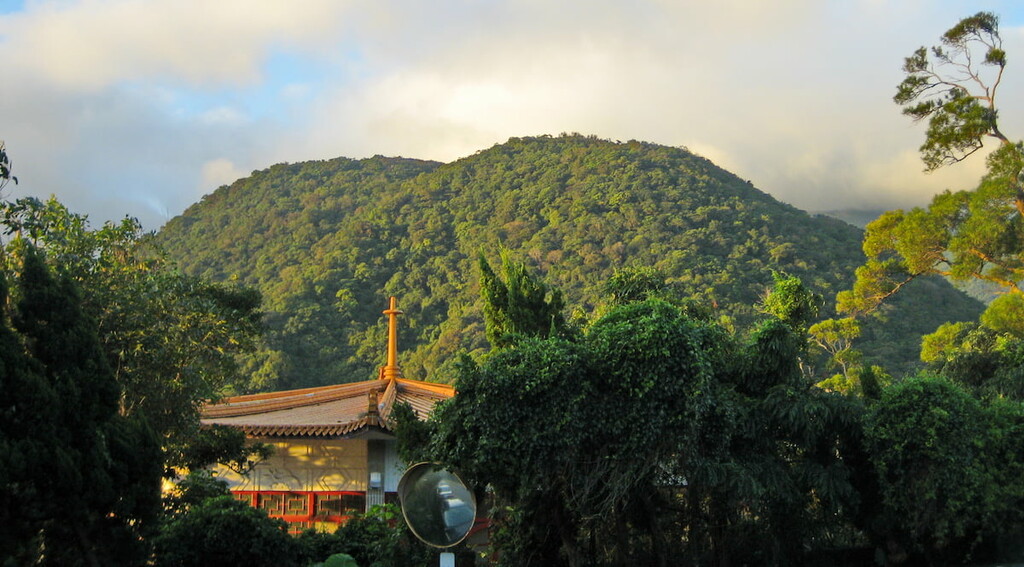
Regarding climate, Yangmingshan Natural and Cultural Special Landscape Area has dry shoulder seasons, with winter and summer producing the most rainfall. The northeast monsoon passes through in winter, while typhoons descend from June to October. Summers can reach highs of 81°F (27°C), while winter settles at an average of 55°F (13°C) - it stays mildly warm throughout the year.
As Yangmingshan Natural and Cultural Special Landscape Area lies close to Taipei, travelers visiting the region can team the trip with other nearby wonders. The National Palace Museum lies south, the historical Tamsui District (淡水區) is in the west, and to the east lies Juansi Waterfall (絹絲瀑布). Datunshan and Qixingshan (七星山) are popular hiking hills in the north.
Part of the Datun Volcano Group (大屯火山群), Shamao Shan and its hilly network are dormant volcanoes that erupted across several stages from 200,000 to 1 million years ago. Shamao Shan is actually a parasitic volcano, having erupted from Qixingshan’s overflow of lava blocked its vent. Formed from andesitic lava, Shamao Shan and its surrounding peaks’ geological composition is sedimentary and igneous rocks.
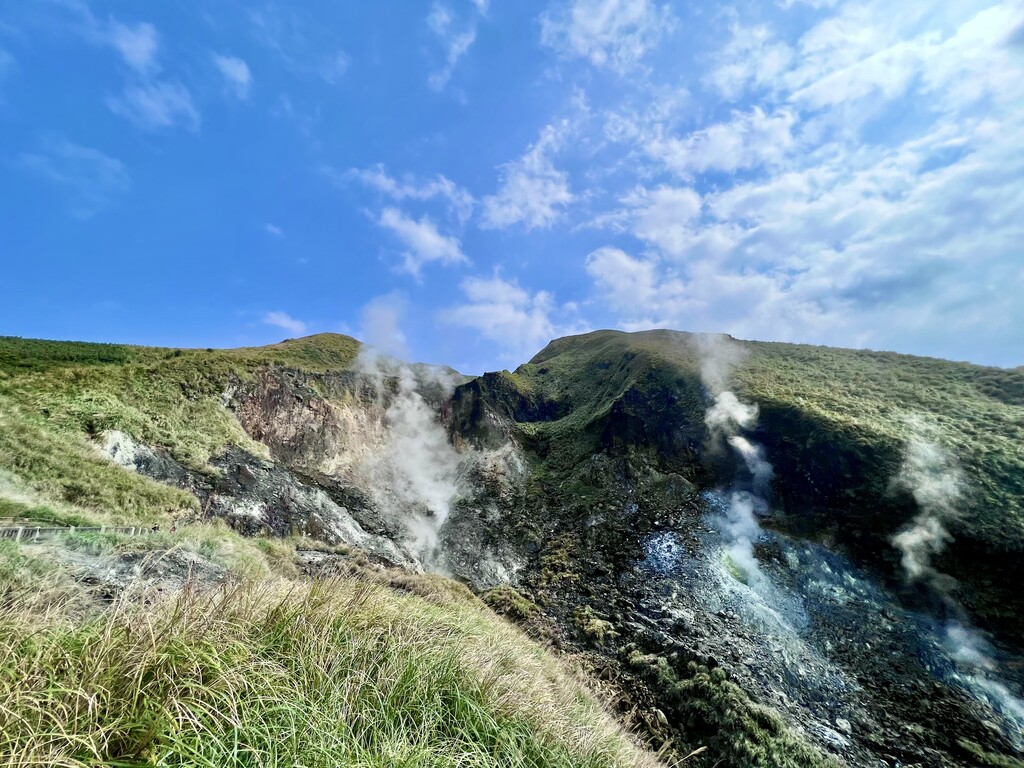
A thriving broadleaf forest grows in the hillsides and valleys of Yangmingshan Natural and Cultural Special Landscape Area. The primary plant species are Taiwan cedar, Taiwan red pine, acacia, and sweetgum trees. Vibrant ground cover of ferns, taro, and spleenworts adds layers of greenery to the pathways.
Usually, at 800 meters (2,625 ft) and above, you’ll find thickets of Pseudosasa japonica, known as arrow bamboo, for its spear-shaped cylindrical beams. These are most prominent before the mountaintop and, sometimes, can cover the summit completely.
Bird watching is popular in the hills of Yangmingshan Natural and Cultural Special Landscape Area. Common birds to spot are the five-colored bird, Taiwan blue magpie, and crested goshawk. Meanwhile, keep an eye out for Taiwan macaques in the forests, as well as red-bellied squirrels hopping from tree to tree.
Yangmingshan National Park was once a series of farmlands where Han settlers resided and established tea plantations, cattle farms, and rice paddies. Once the Japanese gained control over Taiwan, Japanese officials began profiting off Yangmingshan’s natural resources by developing the rural region.
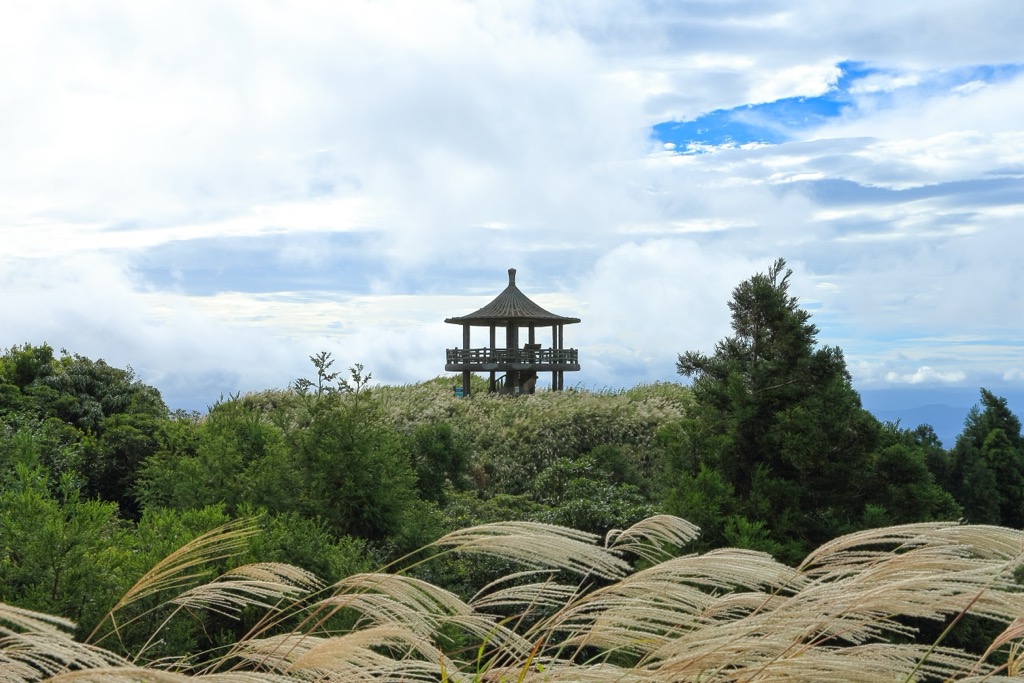
Over time, the Japanese constructed public bathing houses at hot springs, planned hiking trials throughout the undulating grasslands, and established large villas for noteworthy visitors from Japan. The esteemed Grass Mountain Home (草山行館), most famed as Chiang Kai-shek’s temporary residence, was built during this time for Prince Hirohito’s visits to Taipei.
Another prominent cultural establishment during the Japanese Occupation Era is Beitou Hot Spring’s spa hotels. The first hot spring inn was erected in 1896, with many additional hotels constructed over time. While the indigenous Ketagalan tribe knew the healing benefits of the springs, the Japanese were the first to capitalize financially on the natural phenomenon.
When visiting Yangmingshan Natural and Cultural Special Landscape Area, these are the top hiking trails and areas to explore:
Shamao Shan offers a short but steady and steep climb up its peak and sweeping views from its summit. Along the way, you’ll pass historical and cultural remnants on a shaded leafy path.
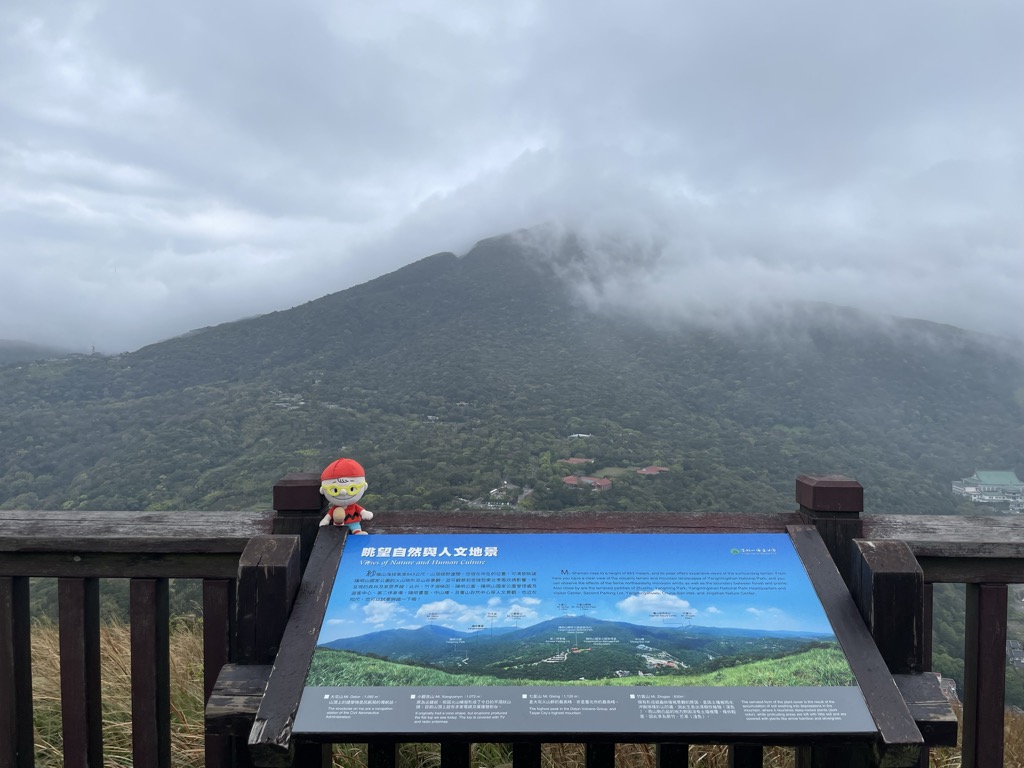
During the Japanese Occupation Era, park officials carried out afforestation efforts on Shamao Shan and nearby Qixingshan and Datunshan. For this reason, a dense forest of mountain cherry, cedar, and sweetgum thrives on the mountain. In the sweltering summer months, the sheltered trail is a welcome respite from the glaring sun.
At the beginning of the trail, you’ll notice a large boulder with engravings. The rock is the boundary stone delineating the border between two families’ farms from before the Japanese took control. As you ascend the 2.2 km (1.3 mi) path, you’ll survey the stunning landscape in the clearings. Just before the summit, you’ll overlook the Qing Dynasty tomb where Chen Xialin’s grandmother was laid to rest. A flagpole indicates the significance and nobility of the grave.
Another relic you’ll encounter before the summit is the Prince Pavilion. Once a complete structure, Prince Pavilion was specifically constructed for Prince Hirohito of Japan’s visit to Yangmingshan National Park to admire the beautiful vistas from above. However, after he visited Grass Mountain House, he went straight to Beitou, skipping Shamao Shan and the Prince Pavilion.
What remains now is a circular stone tablet and two columns. Take a moment to survey the scenery from this historical viewpoint, then head towards Shamao Shan’s summit, where you’ll find colossal andesite rocks. From here, you’ll gaze upon Qixingshan, Datunshan, Miantian Shan (面天山), Xiaoguanyin Shan (小觀音山), and Zhuzi Shan (竹子湖山). In addition, you’ll also be able to locate Yangmingshan Visitor Centre at the park’s entrance and the glittering Zhuzi Lake (竹子湖).
This 5.4 km (3.3 mi) narrow passage, lined by towering bamboo and broadleaf foliage, was once the trading route where merchants would transport rice supplies and other agricultural products. Continue your walk in the Henglin Ancient Trail’s verdant valley to connect to the leafy path to the Banling Trail.
One of the most notable features of this trail is the path sheltered from the radiant Taiwan sun. You’ll feel refreshed by the cool dampness in the summer months. Lines of bamboo reeds create a tunnel-like green corridor in sections of the trail, enclosing you in a world of elongated emerald stems. Part of the trail crosses the gurgling passage of the Song River for a beautiful change of scenery and serene ambiance. Head towards the Sulfur Creek Trail at the path’s end to continue exploring.
For a stark change of scenery, walk the Dragon and Phoenix Valley Trail (龍鳳谷步道), where a constant cloud of sulfur steam rests above the green thermal waters. As you walk along this nearly 1 km (0.6 mi) path, the Longfeng Valley and Sulfur Valley on either side will ensure that fumaroles constantly surround you.
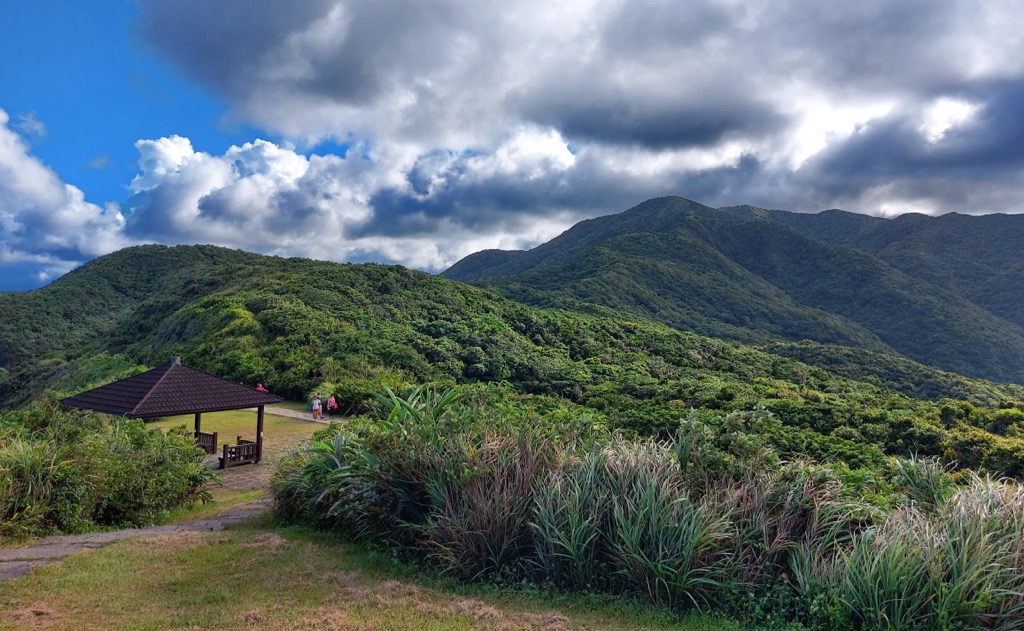
Climb the stone steps that undulate across the track as you marvel at the yellow-stained sulfur stone glittering under the Taiwan sun. The geothermal landscape of crumbling rocks, ashen outcrops, and rich ecology thanks to volcanic moss that helps plants to flourish.
Along your walk, you’ll note several fumaroles and hot springs' sulfuric vapor while admiring the landscape of verdant valleys. Also scattered along the path are numerous Buddhist sculptures, and you’ll also have a stunning and clear view of Taipei 101 rising above the Taipei City basin.
An absolute must-see path in the springtime, Shibafen Shuizen Trail (十八份水圳步道) is a 1.2 km (0.7 mi) passage through blossoming cherry trees. Situated alongside Taipo Farm (大埔農場), where dense groves of cherry blossoms and maple trees thrive, a soft pink shower of flowers will envelop you.
Once a settlement of 18 households, Shibafen is an irrigation area where farmers cultivate agricultural produce, mostly cherry blossoms. Along the trail, you’ll reach the Fengxiang Viewing Platform, where you can take in the bucolic landscape surrounded by rolling hills and undulating grasslands. You’ll see nearby Shamao Shan and be able to locate Qixingshan from your position. Continue on the path to connect to other routes leading you to hot springs or mountain trails.
North of the area is Zhizihu, a former crater lake that has transformed into a lush valley and a picturesque farming village. Nestled in the mountains, at the foothill of Datunshan and Zhizihu Shan, the farmlands are home to an abundance of crops, including bell peppers, corn, Chinese yam, cucumbers, tomatoes, and calla lilies.
The stunning calla lilies bloom each February, covering the meadows with their pristine white petals and drawing in visitors from far and wide. Additionally, tourists can explore the nearby pine and bamboo forests and take leisurely strolls through the local farms.
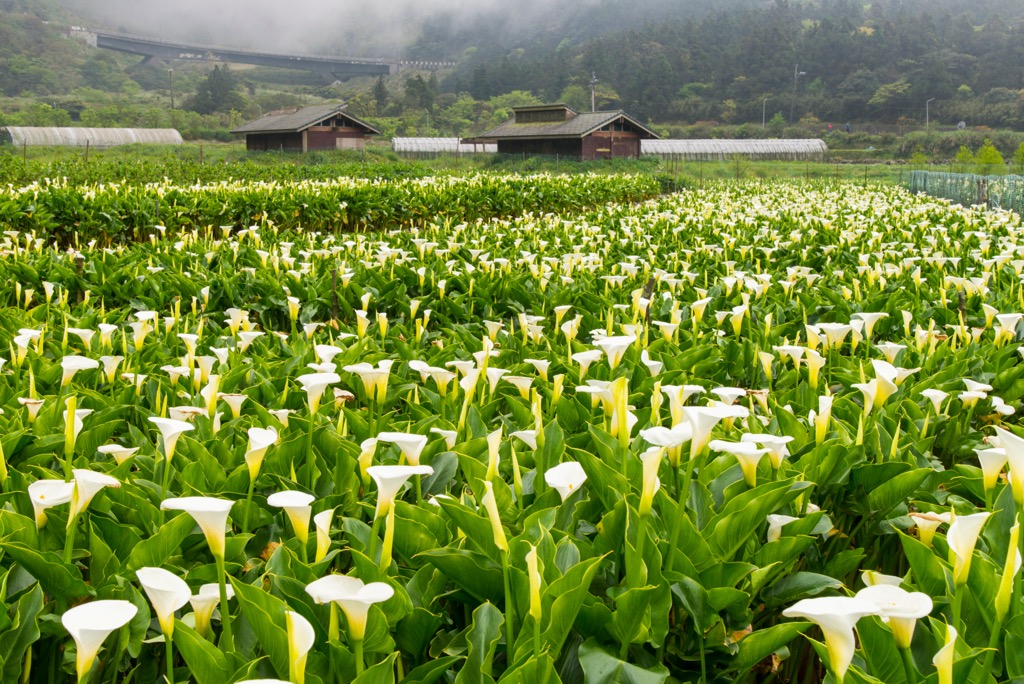
For a dose of relaxation and rejuvenation, visit Beitou Hot Springs (北投温泉) for its rich mineral thermal waters, renowned for their therapeutic benefits to skin ailments. Bathe in the green sulfurous warm liquid as lush greenery and majestic mountains envelop you. Enjoy your bubbling soak to the sound of luxurious tranquility, partly interrupted by merry birdsong.
After your steaming bath, explore the charming town of Beitou, steeped in history and culture. Visit the Beitou Hot Springs Museum, a Japanese-era public bathhouse that now showcases the history and evolution of hot spring culture in the area. You can also stroll through the Beitou Thermal Valley to observe the naturally occurring geothermal wonders.
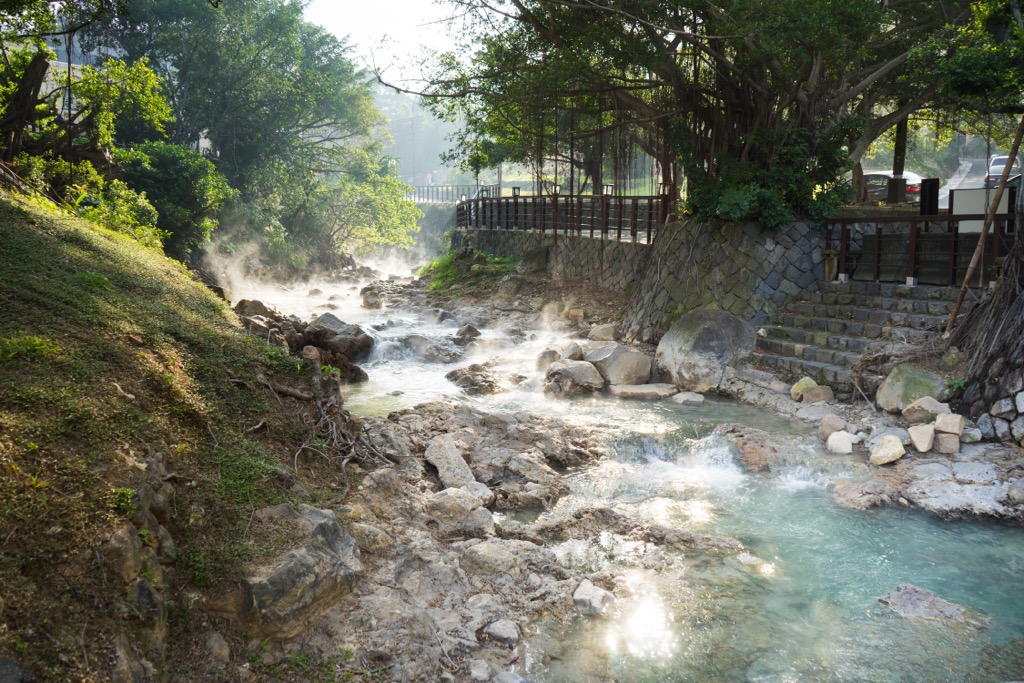
For convenience, staying in Taipei City should be your first option. However, that doesn’t mean it's the only option. While the capital city is a vibrant hub to begin your Taiwan adventures, nearby Tamsui District in New Taipei City (新北市) is another excellent area to use a base if you’re visiting this region.
Taiwan’s bustling capital is an intoxicating blend of traditional architecture, ancient temples, and cutting-edge technology and deserves a top spot on every traveler’s Taiwan bucket list. What surprises visitors to this sprawling metropolis is the abundant greenery and surrounding mountainscapes. Avid hikers and nature enthusiasts will love all the adventures they can have in this leafy city.
Visit Taipei’s answer to Central Park, the leafy 26 ha (64 ac) Da’an Forest Park (大安森林公園), also known as the ‘Lungs of Taipei.’ While much smaller than New York City’s famous greenspace, Taipei residents flock to Da’an Forest Park to immerse themselves in the calming woodlands of camphor, maple, and ficus trees.
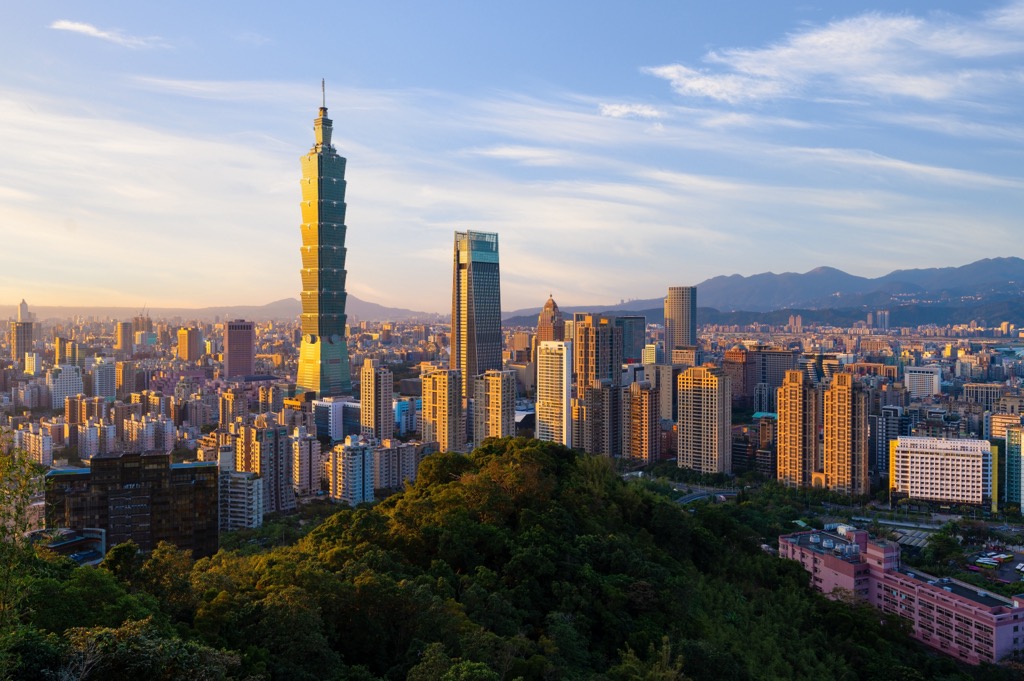
Walk the leafy trails, some entirely shaded from Taipei’s radiant sunlight, and inhale the fresh air the thriving forest produces. Watch for wildlife, from squirrels, ducks, and turtles swimming in the ecological pools. Take a picnic and lay on the grasslands under the warm glowing sun, or stop by the nearby restaurants afterward to refuel your energy.
Another must-do in Taipei is hiking the prominent Elephant Mountain (象山) (also known by its Chinese name Xiangshan). This 1 km (0.6 mi) short but steep hike affords some of the most unrivaled views of Taiwan’s capital, with Taipei’s famous landmark, the lotus-shaped tower of Taipei 101, front and center.
While you may need some rest breaks on this challenging 600-step trail, the copious foliage along most of the path blocks direct sunlight and adds to the breathtaking experience when the path opens up to stunning views in the clearings near the summit. Enjoy the stunning vistas over Taipei, and then enjoy your downhill journey that is gentler on your legs.
Next is the Maokong Gondola, a cable car that whisks you to Taipei’s hilly outskirts for more scenic views of the capital. You’ll glide above farmlands and Taipei’s top tea plantations as you journey to Maokong (貓空) to take in the luscious greenery of this rustic area. Ride the crystal-bottomed cabins to admire the flourishing vegetation.
Once at Maokong, explore the overgrown hiking trails, where emerald foliage will entirely surround you. Choose from several charming tea houses to sample traditional oolong tea or indulge in a dessert of tea-flavored ice cream with views of distant Taipei in the background.
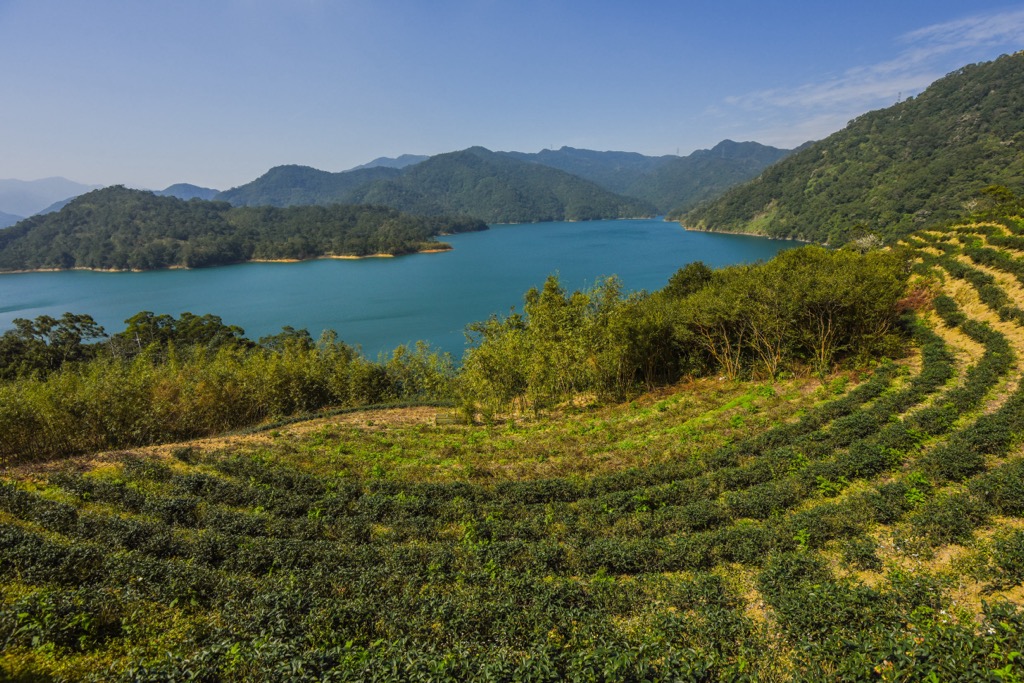
One of Taiwan’s oldest communities, Tamsui District, is known for its illustrious port. Merchant ships from afar would trade goods at Tamsui harbor, and many settlers first set foot in Tamsui over hundreds of years. Thus, it’s brimming with history, stories, and esteemed structures that have stood over time. Moreover, it's easily connected to Taipei on the MRT system.
One of Tamsui’s most scenic attractions is Wuji Tianyuan Temple (淡水無極天元宮), a circular, five-tiered pagoda that looks like something out of a fairytale. It’s most stirring during the springtime when pastel pink cherry blossoms bloom, which happens to be its most popular season for tourists. However, the temple’s intricate design and bold colors are worth a visit in any season. Also, as it's set against Yangmingshan National Park’s backdrop of rolling mountains, the landscape is dramatic and stunning.
Next, you’ll want to infuse in the portside charm of Tamsui Fishermans Wharf (淡水漁人碼頭), an ancient area that received a modern facelift. Wander along the bustling promenade and head towards the area’s centerpiece, Lovers Bridge. Spanning 165 meters (541 ft), this contemporary structure resembles a sail-shaped arch and illuminates all colors of the rainbow at night. Base yourself here at sundown for the most stunning sunsets in northern Taiwan. For another picturesque viewpoint, climb Lovers Tower to marvel at the sapphire riverport with floating docks and New Taipei City’s verdant landscape in the distance.
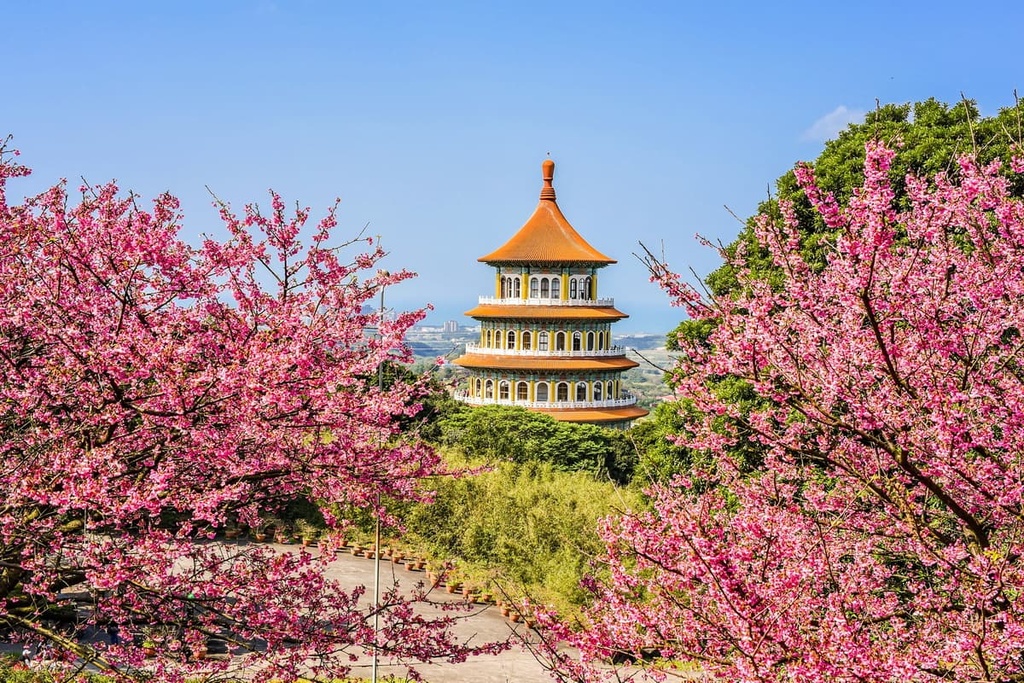
Finally, visit one of northern Taiwan’s historical zones, steeped in tradition and culture dating back to the Qing Dynasty. As you wander through the winding streets of Tamsui Old Street (淡水老街), you'll be transported back in time. The area has traditional buildings, temples, and shops selling souvenirs, handicrafts, and local snacks.
One of the highlights of Tamsui Old Street is its famous fish balls, which are a must-try for visitors. Other popular snacks include iron eggs, quail eggs that have been slow-cooked in a special marinade, and Tamsui's famous A-Gei, a unique tofu dish stuffed with noodles and vegetables. Easily accessible by public transportation, it's a great place to spend a day exploring and experiencing Tamsui’s rich heritage.
Start your journey at Taipei Main Station, taking the red MRT line to Jiantan MRT Station. Transfer to the 260 shuttle bus or R5 bus to Yangmingshan National Park, then take the Yangmingshan 108 bus to the Visitor Center, where you can walk to Yangmingshan Natural and Cultural Special Landscape Area.
Explore Yangmingshan Natural and Cultural Special Landscape Area with the PeakVisor 3D Map and identify its summits.








